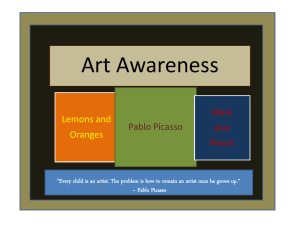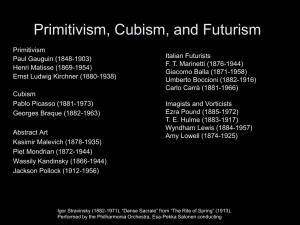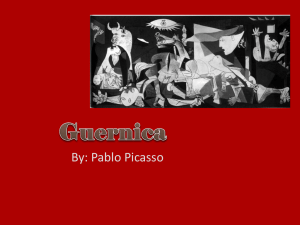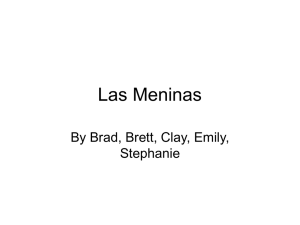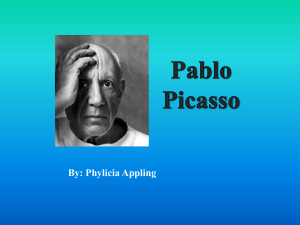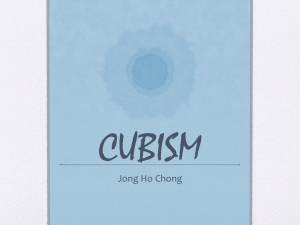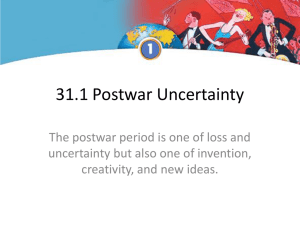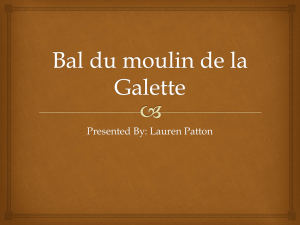Pablo Picasso
advertisement
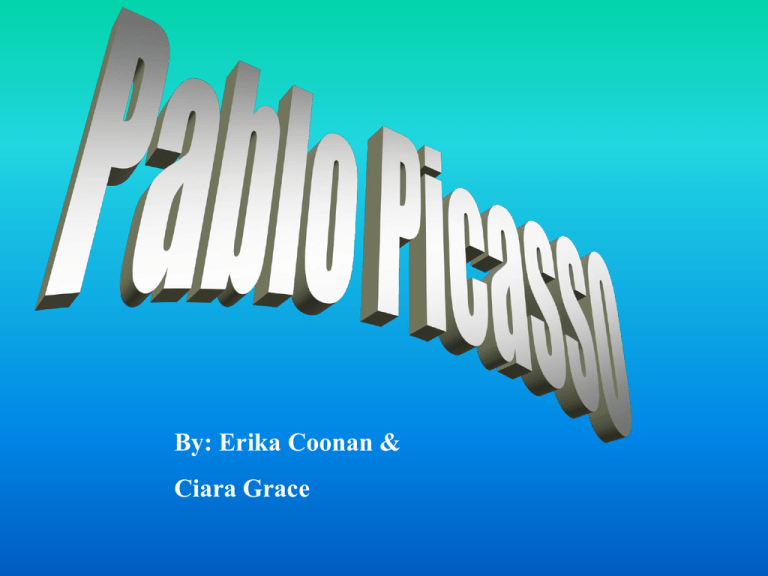
By: Erika Coonan & Ciara Grace Early Years • Pablo Picasso was born on October 25, 1881 in Malaga, Spain. • Picasso’s father José Ruiz y Blasco was also a painter himself and recognized Pablo’s talent at his young age. • Pablo’s first painting was at the very young age of eight ! Picasso's first painting at age 8, Picador (1889). • Pablo’s father taught him the basics of formal and academic art training. • Pablo’s father was also a professor of art at the school of craft and the founder of the local art museum. • It involved figure drawing and painting in oil. • Picasso attended many art schools during his childhood, many those of where his father taught • He never finished his studies at the Academy of Arts in Madrid, dropping out after only a year. • Relationships. • In the early years of the twentieth century, Picasso, still a struggling youth, began a long term relationship with Fernande Olivier. It is she who appears in many of the Rose period paintings. After garnering fame and some fortune, Picasso left Olivier for Marcelle Humbert, whom Picasso called Eva. Picasso included declarations of his love for Eva in many Cubist works. Humbert was diagnosed with cancer and during her rapid deterioration, Picasso administered to her every need, making daily trips across Paris to visit her in the hospital. • In 1918, Picasso married Olga Khoklova, a ballerina with Sergei Diaghilev's troupe, for whom Picasso was designing a ballet, Parade, in Rome. Khoklova introduced Picasso to high society, formal dinner parties, and all the social niceties attendant on the life of the rich in 1920s Paris. The two had a son, Paulo, who would grow up to be a dissolute motorcycle racer and chauffeur to his father. Blue Period • Feelings were very important for Pablo. When he moved to Paris he was very poor . He lived in very poor conditions . When Picasso’s friend took his own life , Pablo entered the Blue Period. This was when he started painting with blues and greens with occasionally warn colors . This includes The Blind Man’s Meal , The Old Guitarist and The Tragedy. The Blind Man’s Meal. . The Blind Man’s Meal was in Barcelona painted in 1903. This image shows unhappiness, despair and sorrow. In a letter Picasso said “I am painting a blind man at a table . He holds some bread in his left hand feeling around with his right hand for a jug of wine. This shows how sad and depressed Pablo was during the Blue Period . “Le Gourmet” 1901 “The Tragedy” 1903 Rose Period • In 1905-6, Picasso's palette began to lighten considerably, bringing in a distinctive beige or "rose" tone. The subject matter also is less depressing . Here are the first appearances by the circus performers and clowns that will populate Picasso's paintings at various stages through the rest of his long career. • Pablo thought that clowns were happy and playful so he thought they would liven his paintings . Boy With A Pipe The Boy With A Pipe was painted in 1905 when Picasso was 24 years old . He painted this painting when he was going through the Rose Period . As you can see he uses warmer colours in this period . The painting is of a boy smoking a pipe in front of a bunch of flowers . In Spanish it is pronounced “ Garcon a la pipe”. “Girl in Chemise” 1905 “Two Youths” 1905 Cubism Period • In late 1906, Picasso started to paint in a truly revolutionary manner. Inspired by Cézanne's flattened portrait of space, and working alongside his friend Georges Braque, he began to express space in strongly geometrical terms. These initial efforts at developing this almost sculptural sense of space in painting are the beginnings of Cubism. • This inspired Picasso. His Cubism Period include The Three Musicians , Violin And Candlestick and Portrait Of Picasso ( Cubism ) . The Three Musician’s . • The Three Musician’s was painted in 1921. • It is a large painting measuring at two meter wide and high . • The painting is made up of three men and three instrumints . • This shows how Pablo took on abstract art with full force . “Self Portrait with Palette” 1906 “Violin & Guitar” Picasso the Legend • By the late '30s, Picasso was the most famous artist in the world. He was called upon to depict the brutality of fascist aggression in the Spanish Civil War with his monumental "Guernica". • Many other paintings from this period reflect the horror of war, but there is a consistent depiction of personal interest as well. The women in Picasso's life had a major impact on his artistic production, and some of the best examples are from this period. Picasso’s Late Works • In the last two decades of his long career, Picasso produced more work than at any other time of his life. During this period, some works are not only dated by month and day, but with a numeral (I, II, III, etc.) indicating multiple works created that single day! • This late period tends to be overlooked, but contains some of the finest of Picasso's paintings. Some critics maintain Picasso was creatively lazy at this point, but a close look at the work is very rewarding. He had achieved a level of effortless artistic expression that, I believe, has still not been fully appreciated after more than 25 years. • Regardless of your position on Picasso's personal and artistic life, each of us can, in view of our own mortality, be awed by his final selfportrait. • Throughout Picasso's lifetime, his work was exhibited on countless occasions. Most unusual, however, was the 1971 exhibition at the Louvre, in Paris, honoring him on his 90th birthday; until then, living artists had not been shown there. In 1980 a major retrospective showing of his work was held at the Museum of Modern Art in New York City. Picasso died in his villa Notre-Dame-de-Vie near Mougins on April 8, 1973. Facts you did not know about Pablo Picasso . • Pablo Picasso’s full name is Pablo Diego Jose Francisco de Paula Juan Nepomuceno Maria de los Remedios Cipriano de la Santisima Trinidad Martyr Patricio Clico Ruizy Picasso . • In 1985 , Pablo’s younger sister who was seven years old died of dipheria . • Pablo had his first exhibit at the young age of 13 , when he showed his painting’s in the back room of an umbrella store . • Pablo was once brought into the police head quarters in Paris for co-accused of stealing the Mona Lisa from the Lourve in 1911. R.I.P Pablo Picasso . 1881-1973



